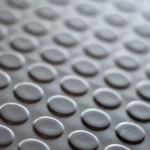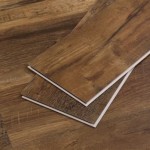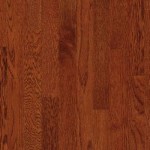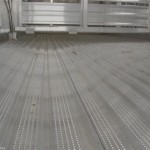Lino Roll Flooring: A Comprehensive Overview
Lino roll flooring, often referred to as linoleum, is a resilient and versatile flooring option with a long history. Derived from natural, renewable raw materials, it offers a compelling blend of durability, sustainability, and aesthetic flexibility. This article provides an in-depth examination of lino roll flooring, detailing its composition, manufacturing process, advantages, disadvantages, applications, installation, and maintenance.
The term "lino roll flooring" specifically refers to linoleum supplied in rolls, allowing for minimal seams in larger spaces. This is in contrast to linoleum tiles, which are often used for smaller areas or design features. Understanding the nuances of lino roll flooring is critical for making informed decisions about flooring solutions in both residential and commercial settings.
Composition and Manufacturing Process
Linoleum's core ingredients are what set it apart from many synthetic flooring materials. The primary components are linseed oil, rosin, wood flour or cork dust, limestone, and pigments. These ingredients are combined and then pressed onto a jute backing. The manufacturing process is a multi-stage operation that transforms these raw materials into a durable and decorative flooring surface.
Linseed oil, extracted from flax seeds, is the binding agent that gives linoleum its flexibility and resilience. Rosin, derived from pine trees, contributes to the material's binding properties and adds to its water resistance. Wood flour or cork dust provides bulk and stability to the linoleum mixture. Limestone acts as a filler and adds to the material's fire-retardant properties. Pigments are added to create a wide range of colors and patterns, allowing for diverse aesthetic options. The jute backing provides structural support and allows the linoleum to be adhered to the subfloor.
The manufacturing process begins with the oxidation of linseed oil, which thickens it into a resinous substance known as linseed oil cement. This cement is then mixed with the other ingredients to form a linoleum "dough." This dough is calendered (passed through rollers) onto the jute backing under immense pressure. The resulting sheet is then cured in ovens for several weeks or even months. This curing process allows the linoleum to harden and develop its characteristic durability and resistance to wear. Control over temperature, humidity, and time in the curing ovens is critical in influencing the final product characteristics.
Modern linoleum manufacturing often incorporates advanced techniques, such as using different grades of linseed oil and varying the proportions of other ingredients to achieve specific performance characteristics. Some manufacturers also apply surface treatments to enhance stain resistance, reduce maintenance requirements, or improve slip resistance.
Advantages of Lino Roll Flooring
Lino roll flooring presents several compelling advantages that make it an attractive flooring option for various applications.
One of the primary benefits is its durability and longevity. When properly installed and maintained, linoleum can last for decades, making it a cost-effective flooring solution in the long run. Its resistance to wear and tear, coupled with its ability to withstand heavy foot traffic, makes it suitable for high-traffic areas in both residential and commercial settings. Additionally, linoleum has a natural inherent ability to heal minor surface scratches over time due to the continuous oxidation of the linseed oil.
Another significant advantage is its sustainable and environmentally friendly nature. As it is made from renewable raw materials, linoleum is a sustainable choice compared to many synthetic flooring options. The use of linseed oil, wood flour, and jute makes it a biodegradable material that has a lower environmental impact. Many manufacturers also employ eco-friendly production practices, further enhancing the sustainability of lino roll flooring. This makes it a preferred option for projects seeking LEED certification or aiming for a reduced carbon footprint.
Lino roll flooring also offers a wide range of design possibilities. It is available in a vast array of colors, patterns, and textures, allowing for creative and customized flooring designs. Modern manufacturing techniques allow for intricate patterns and realistic imitations of other materials, such as wood or stone. The flexibility of linoleum also makes it suitable for intricate inlays and custom designs. Its large roll format minimizes seams, creating a clean, seamless look, particularly ideal for large open spaces. It is also possible to achieve a monolithic, almost seamless look by heat welding the seams together during installation.
Furthermore, lino roll flooring is naturally antibacterial and hypoallergenic. Linseed oil has inherent antibacterial properties that inhibit the growth of bacteria and microorganisms. This makes linoleum a hygienic flooring choice for areas where cleanliness is paramount, such as hospitals, schools, and kitchens. Its smooth, non-porous surface is also easy to clean and maintain, minimizing the risk of allergen buildup. This is a significant advantage for individuals with allergies or sensitivities to dust and mold.
Linoleum also provides a comfortable underfoot feel. It has a degree of natural resilience, which makes it softer and warmer compared to hard flooring surfaces like tile or concrete. This can enhance comfort and reduce fatigue, particularly in areas where people stand for extended periods. The resilient nature also contributes to noise reduction, absorbing sound and creating a quieter environment.
Disadvantages of Lino Roll Flooring
While lino roll flooring offers several advantages, it also has some limitations that should be considered before making a decision.
One of the primary drawbacks is the initial cost of installation. While the material itself may be competitively priced, the installation process can be more complex and labor-intensive compared to some other flooring options. Proper installation is crucial for ensuring the longevity and performance of linoleum, and it often requires a skilled and experienced installer. Factors such as proper subfloor preparation, precise cutting, and seam welding can add to the overall cost.
Another potential disadvantage is its susceptibility to damage from certain chemicals and prolonged exposure to moisture. While linoleum is water-resistant, it is not waterproof. Prolonged exposure to standing water can cause the jute backing to deteriorate, leading to bubbling or warping. It is also susceptible to damage from strong alkaline cleaning agents or solvents, which can cause discoloration or degradation of the surface. Careful selection of cleaning products and prompt removal of spills are essential to prevent damage.
Linoleum can be prone to denting from heavy furniture or sharp objects. Although it has a degree of resilience, heavy loads concentrated in a small area can cause permanent indentations. Using furniture pads or protective mats under heavy items can help prevent this type of damage. Similarly, dropping sharp objects can scratch or gouge the surface. While minor scratches can often heal over time, deeper gouges may require professional repair.
The initial odor of linoleum can be a concern for some individuals. During the curing process, linoleum emits a characteristic odor that some people find unpleasant. While this odor typically dissipates over time, it can be noticeable in the initial weeks after installation. Proper ventilation can help accelerate the dissipation of the odor. Some manufacturers also offer low-VOC (volatile organic compound) linoleum options to minimize off-gassing.
Applications, Installation, and Maintenance
Lino roll flooring finds applications in diverse settings, owing to its durability, sustainability, and aesthetic versatility. It is commonly used in residential spaces, including kitchens, bathrooms, hallways, and living areas. Its hygienic properties make it a suitable choice for kitchens and bathrooms, while its durability makes it ideal for high-traffic areas. Commercially, it is frequently found in hospitals, schools, offices, retail stores, and other public spaces. Its resilience and ease of maintenance make it a practical flooring solution for these demanding environments.
The installation of lino roll flooring requires careful attention to detail to ensure a long-lasting and aesthetically pleasing result. Proper subfloor preparation is paramount. The subfloor must be clean, level, dry, and free from any debris or imperfections. Any unevenness or imperfections in the subfloor will telegraph through the linoleum, creating an uneven surface and potentially leading to premature wear. Self-leveling compounds are often used to create a smooth and even subfloor.
The linoleum roll is typically unrolled and allowed to acclimate to the room temperature for a period of time. This allows the material to relax and adjust to the ambient conditions, minimizing the risk of shrinkage or expansion after installation. The linoleum is then carefully cut to size, allowing for slight overlaps at the seams. A specialized adhesive, specifically designed for linoleum, is applied to the subfloor. The linoleum is then carefully positioned and rolled out, ensuring that it is properly adhered to the subfloor and free from air pockets. The seams are then heat-welded using a specialized heat gun and welding rod to create a seamless and waterproof joint.
Proper maintenance is crucial for preserving the appearance and extending the lifespan of lino roll flooring. Regular sweeping or vacuuming is essential to remove dirt and debris that can scratch or dull the surface. Damp mopping with a mild detergent is recommended for routine cleaning. Avoid using abrasive cleaners or harsh chemicals, as these can damage the linoleum surface. Promptly clean up spills to prevent staining or water damage. Applying a protective floor finish or wax can help to enhance stain resistance and add a layer of protection against wear and tear. It is also recommended to use furniture pads under heavy furniture to prevent denting.
.jpg?strip=all)
What Is Linoleum Flooring America

Linoleum Flooring Pros And Cons Forbes Home

Types Of Vinyl Flooring The Home Depot
Vinyl Sheet Flooring For Homes Tarkett Emea

Heavy Duty Grey Slate Stone Tile Vinyl Cushion Flooring Roll Lino 2m 4m

Commercial Vinyl Flooring Lvt Vs Vct Sheet

Sheet Vinyl Flooring Commercial Grade 6 To 12 Feet Sheets
Diffe Types Of Vinyl Flooring Tarkett

Lino Flooring 10 Best Linoleum Ideas

Granada Black Sheet Vinyl Flooring 2 Metre Wide Roll 78








